While the Ganges is sacred but heavily polluted, the Chambals cursed but pristine waters have proved a blessing for locals

Cold-blooded gharials, a crocodile-like species unique to south Asia, catch the last of the days warmth as a setting sun paints the sky crimson above the Chambal river.
Two jackals and a jungle cat scuttle up thorny ravines that box in the expansive blue water, while the orange-beaked Indian skimmer bird glides overhead.

In a village temple, a short walk away in Nadgawan, local priest Kailash Narayan Sharma says he frequently walks down to the Chambal but never to pray.
For a spiritual river visit, the gregarious 71-year-old opts instead to travel several hours to the banks of the better-known Ganges or its Yamuna tributary.His reasoning, offered between occasional puffs on his pipe, explains why the Chambal has maintained its wildlife and pristine waters.
The Ganga and Yamuna are holy. But theres a lot of pollution, he says. The Chambal is unholy, but the water is healthy.
The Chambal, winding more than 500 miles through central and northern India, provides a sharp contrast to the countrys catastrophically polluted rivers, like the Ganges, which Narendra Modi has vowed to clean a promise the prime minister has yet to fulfil.
The difference is rooted in thousands of years of stigma. Unlike the sacred Ganges, the Chambal and surrounding land are traditionally regarded as cursed and dangerous badlands.
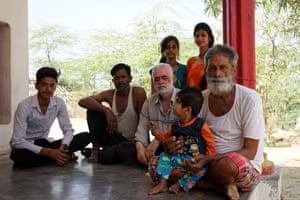
The Sanskrit epic Mahabharata is just one of many sources telling of ancient curses, of a ghastly river that runs with the blood of slaughtered cows. The inhospitable surrounding terrain, full of steep ravines, has made it a haven for all manner of rebels, mutineers and criminal gangs in the past, providing ample fodder for gossip in local tea shops and among Bollywood screenwriters.
But that notorious past may just have proved the Chambal rivers saving grace. It limited the growth of cities and polluting factories on its banks, while local wheat farmers and cattle herders have used its resources cautiously.
In 1979, Indias governmentdeclared a 250-mile stretch of the river a national sanctuary, helping to revive the critically endangered gharial population from a couple of hundred to an estimated thousand-plus.
Kailashs 20-year-old niece, Namrita Sharma, says she once lived in fear of the river that flowed so close to her home. Now shes proud. Weve heard the stories from our parents and grandparents, she says. When we were young, there were very few animals. Now we see more and more.

As for the Ganges, environmental activists say Modi isnt even close to his target of cleaning the river by 2020, despite backing for the project of 200bn rupees (2.2bn). The majority of sewage still flows into its waters untreated, and pollution counts remain many times above safe limits.
What little comfort the millions who live alongside the Ganges can enjoy is thanks in part to the Chambal, which the government-affiliated Wildlife Institute of India has found to be relatively unpolluted.
The rivers waters reduce contamination in the Yamuna when the two meet, according to environmental activist Rakesh Jaiswal of Eco Friends. The water then flows into the Ganges about 180 miles further on.
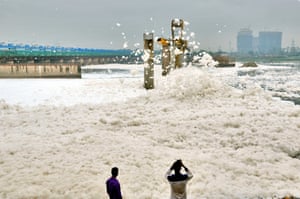
The Yamuna is literally like a filthy stream by the time it meets the Chambal. Then you see this gushing river, which is the Chambal, says Anu Dhillon Singh, an environmental scientist who runs a lodge near the river.
She says locals have the regions notorious past to thank: Thats what helped the Chambal survive. No one from Delhi dared to come set up a cement factory here.
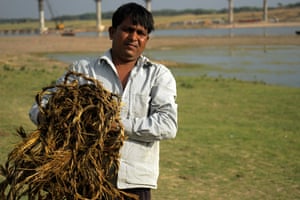
Farmer Chhoti Lal, 26, has come to the Chambals bank to soak wild grass, which he weaves into rope for carrying crops and firewood from his field into town.
When I was young, I was afraid to come, he says. Now were not afraid. There are no bandits. We can graze our cattle, we can collect firewood. It wasnt safe before.
A short trip north to Yamuna highlights the rivers contrasting fates. Pilgrims flock to the gleaming white temples that line the river bank at Bateshwar. Below, detritus piles up: a single mossy sandal, shreds of plastic bags and a dead turtle bobbing face down in the murky water.
Local farmer Ram Khailadi, 70, is troubled by the state of the Yamuna. We dont use the river water, he says. Sometimes we take our cattle into the river, but nobody washes in it because the water is dirty.
At the Chambal, curiously, there are signs that concern about curses is waning. Rajkumari Rathore, 65, is among a growing number who go to the water for ceremonies like Ganesh Chaturthi, in which people dunk effigies of the elephant-headed god Ganesha into the river.
Whenever theres a festival, we go to release the statue into the river, she says. However, these festivals can be polluting in themselves, clogging waterways with non-biodegradable material.
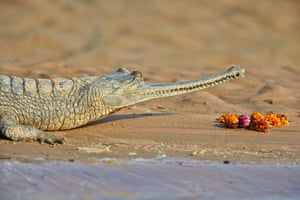
Some locals say protecting the river has come at a cost. Its designation as a sanctuary means there are restrictions on what they can do. They are not allowed to fish, for example, and farmers arent permitted to use electric pumps to irrigate their fields.
For comparison, if I have 10 or 20 acres in the sanctuary, one acre outside would grow more crops, says Darshan Singh, who thinks he is around 70. We are trying to survive with farming, but were suffering.
Udayveer Singh, 48, Nadgawans village head, says the health of the river has been a boon to the community as roads, electricity and toilets have proliferated. But the government needs to provide loans and other support to ensure communities living along the Chambal thrive with it, he says.
It is good for the environment, he says. It is keeping the river clean. But people depend on the river for their income.

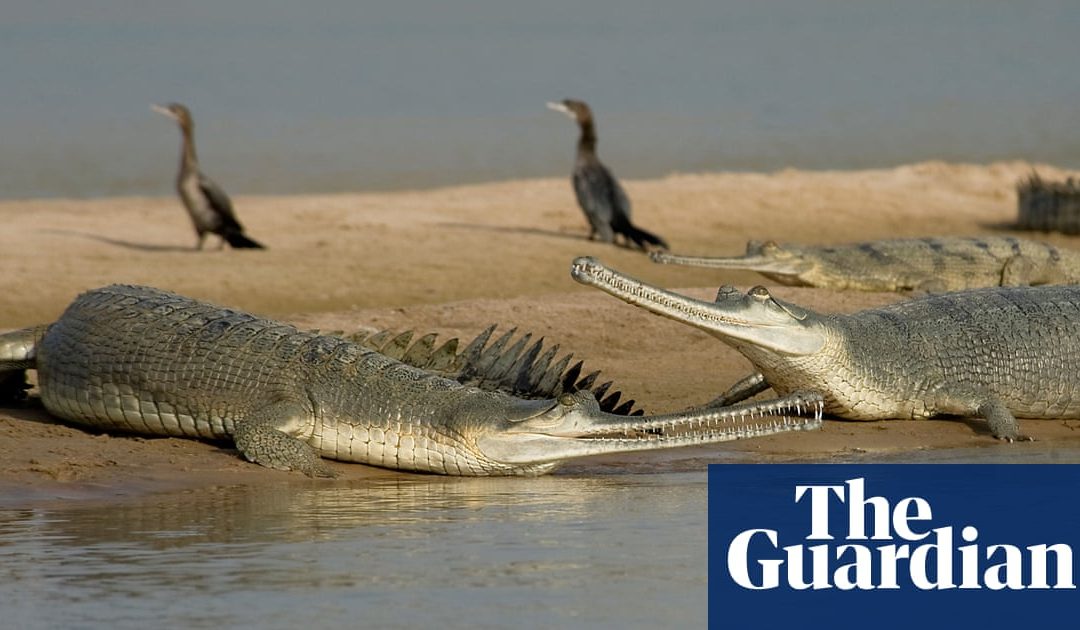
Recent Comments